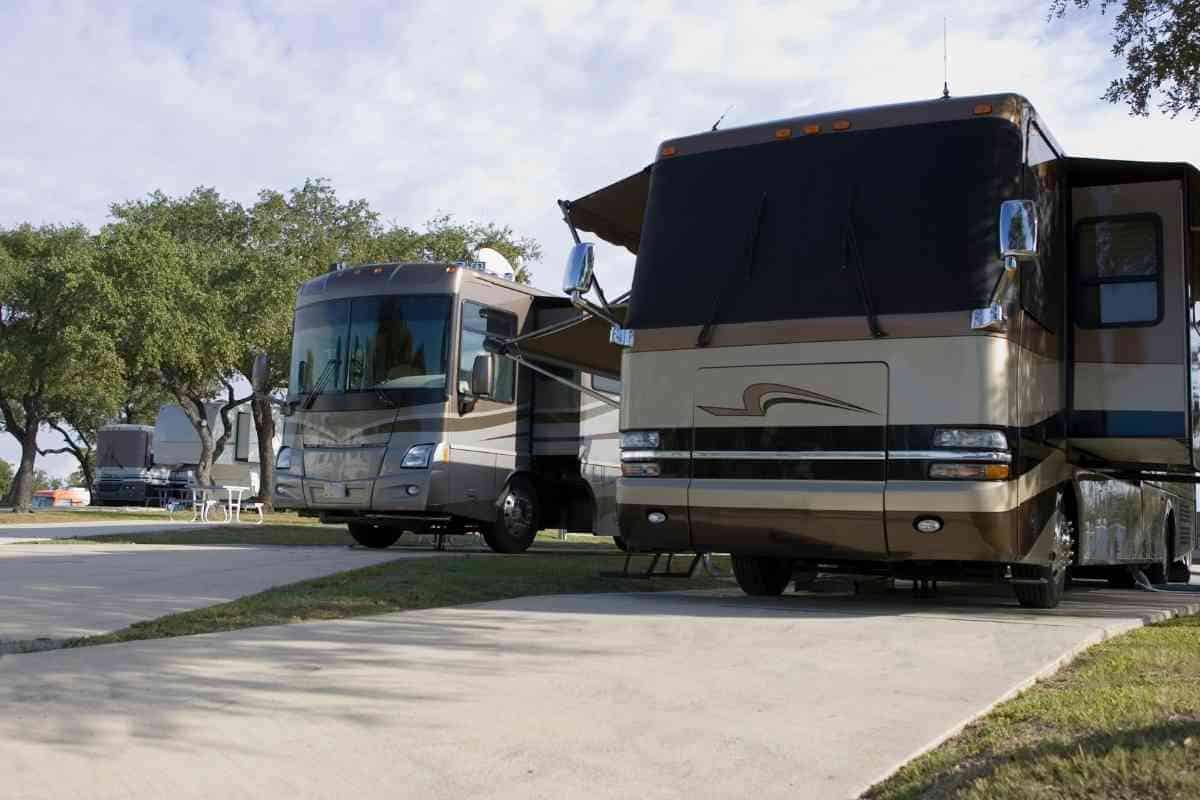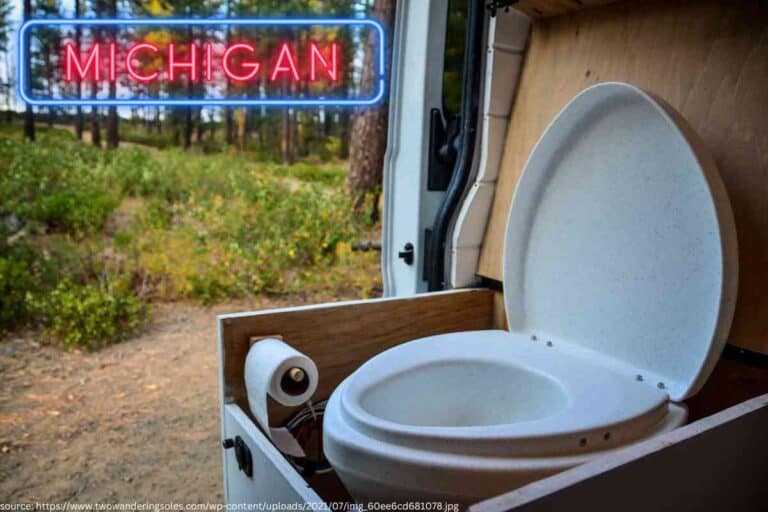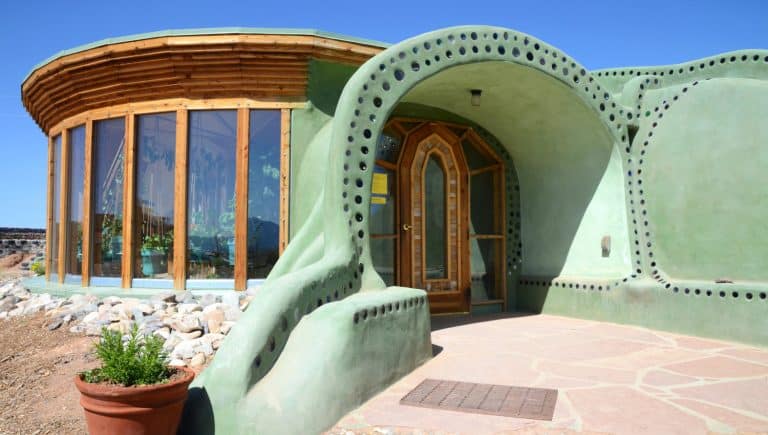2 Reasons Why Your RV Has Two Black Water Tanks
If you are new to RV life, you may be wondering: why does my RV have two black tanks? There are a few possibilities regarding the function of your black tanks. Living in an RV full time can be a big adjustment for anyone, whether you are coming from a homeowners background or are leveling up from a van. If you care for your RV, your RV will last a long time and continue to function properly. This means that you must understand your RV’s plumbing system before you begin your trek into the wilderness.

Why does my RV have two black tanks?
There are two different reasons why an RV may have two black tanks. Some large RVs have two bathrooms, so there is a black water tank for each bathroom. Another possibility is that one of the tanks is for grey water; in some RVs, the tanks are different colors, and in others, they are both black.
Used water from the shower and sink goes into the grey water tank. Waste from the toilet goes into the black water tank. There is no overflow unit for a black water tank, so it is important to empty it before it becomes too full.
If the black water tank overflows, it can cause costly and disgusting damage to an RV. People living off the grid may want to invest in an expansion tank if they are between chances to empty the black water tank.
Sources include Campanda Magazine, Crow Outdoors, Just Downsize, and Parked in Paradise.
What is the Grey and Black Tank on a Camper?
Anyone familiar with living in a mobile home will understand that there are three elements to an RV’s plumbing system:
- The freshwater tank – holds clean water for drinking, cooking, and bathing
- The grey water tank – where the water goes when it drains from the sink or shower
- The black water tank – where waste from the toilet goes
The freshwater tank is usually closer to the front of the vehicle and equipped with a pump. In the back of the vehicle are the grey water and black water tanks that are side by side.
For ease of use, most RVs have the tanks labeled or color-coded to the type of material that they store. If you see a gray tank in your RV camper, it is probably grey water. Likewise, a completely black tank will probably be black water.
Most RVs have two different tanks for waste materials. However, some older or smaller models do not have separate tanks; instead, the runoff from the sink and shower go into the same tank as the waste from the toilet.
Why Do I Have Two Black Tanks?
RVs are designed to provide a comfortable home base for anyone living on the road or off the grid. Modern RVs are equipped with extensive plumbing systems to maintain sanitation and properly dispose of waste.
Unlike camper vans, RVs are equipped with flushable toilets rather than composting toilets. When the toilet in an RV is flushed, the waste material goes to the black water tank.
If you recently invested in an RV or made the upgrade from a van, you might have noticed that your vehicle has not one but two black tanks. There are two possible explanations for this, depending on the make, model, and size of your rig.
Explanation 1: Black Water and Grey Water Tanks
When most people see two black tanks on their new rig, they may wonder if their black water tank has an overflow. For most RVs, there is only a single tank for black water and a single tank for grey water; they just may look similar.
In some rigs, the tanks are color-coded, so the black water tank is black, and the grey water tank is gray. However, it is also possible that both tanks on your rig are black in color.
This explanation is far more common. When purchased new, RVs will usually have labels on the tank valves. If you bought your rig used, you can always find an online version of the user manual to explain what your tank situation is.
It may also be helpful to empty out all the tanks and then run water through the toilet, shower, and sinks to see which tank it goes to.

Explanation 2: Two Bathrooms Means Two Black Tanks
If you check out your rig and see two black tanks, another possibility could be that you actually do have two black water holding tanks.
Most RVs only have one bathroom, but there are a few models of RVs and travel trailers that are equipped with two bathrooms. If each bathroom has a flush toilet rather than a macerator toilet, the rig will be equipped with two black water tanks to handle all the human waste.
Most RV lifers do not need a rig with two bathrooms. A larger rig may only be necessary for larger families with more than four kids or multiple generations living off the grid together.
Does an RV Black Tank Have an Overflow?
An RV black tank does not have an overflow. This means that if the tank exceeds capacity, it will back up and spill out of the toilet or cause the tank to burst.
If an RV’s black water tank is overloaded, it can also put pressure on the surrounding tanks, causing them to leak too. This necessitates emptying the black tank before it reaches capacity.
For those living off the grid, it may be hard to find legal places to properly dump and flush the tanks at a dump station, usually found at most campgrounds. Since RVs are not equipped with overflow tanks, it may be beneficial to invest in a black water expansion tank. This is a portable tank that you can empty your black tank into. It provides more room for waste and buys you time before you need to dump the tanks.
Can You Leave Your Black Water Tank Open?
It is not a good idea to leave your black water tank valves open. When the valves are closed, the tank is sealed, and black water from the toilet is kept inside the tank. If the valves are opened, the liquids from the black water tank will leak out.
Black water tanks should not be left open if you are not pumping or flushing the tank. If a black water tank is left open while the RV or trailer is in transit, then the liquid human waste will leak out onto the road behind the RV.
In the same way that an RV cannot be driven with the side out, management of the black water tank is also necessary to keep safe during a trip.
There is also a far more gross reason why black water valves should stay closed. When a valve is open, the liquids leak out first. Once the liquid is gone, only the solids remain at the bottom of the tank. They solidify quickly and will be difficult to pump out without liquid to aid the emptying process.
There are some situations where you will need to open your black tank valves other than pumping and dumping the contents. The valves should be opened and closed at least once a month to prevent oxidation. You will also need to completely rinse and drain the tanks.
Proper RV care and maintenance require periodically opening the black tank valves. However, you should never leave those valves open for a long period of time.






